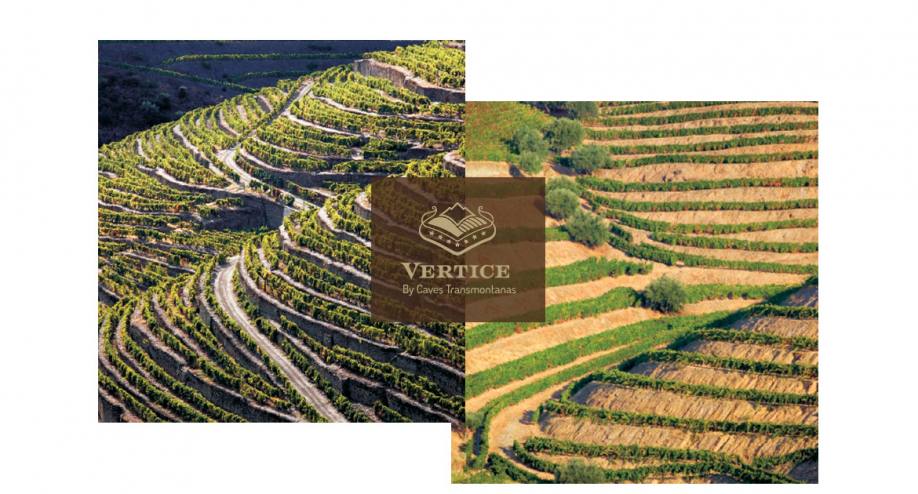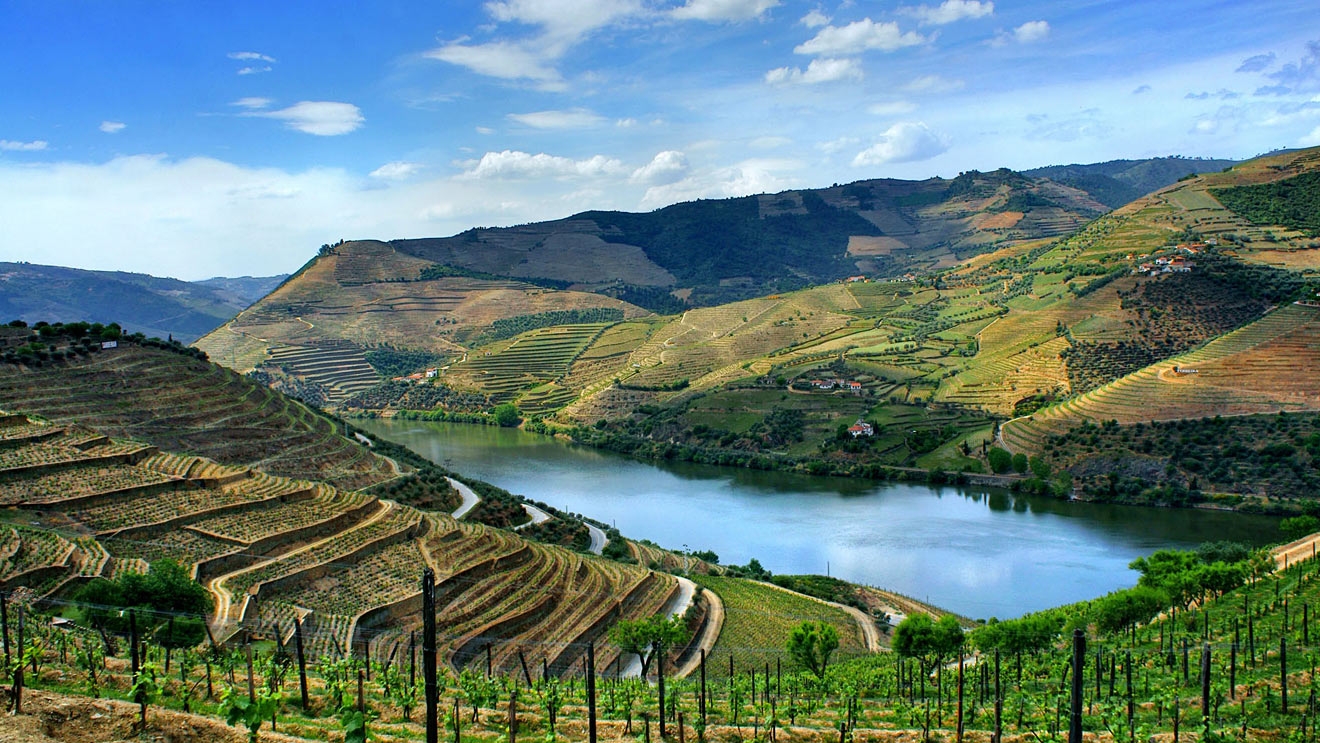Douro RegionSurrounded by the Transmontanas mountains and the borders of the Douro Valley, the climate is hot and dry. The West is sheltered from the damp winds by the granite hills of Marão and Montemuro. The vineyards grown in granite and schist lands are subject to very hot and dry summers and harsh and long winters with lots of frost and snow. They are unique wines born of this odd combination of soil, climate and man's work.
The Douro region is located in the northeast of Portugal, surrounded by the mountains of Marão and Montemuro. The wine-growing area occupies about 40,000 hectares, despite the region extends over approximately 250,000 hectares. The vineyards come from the top of the deep valleys to the river and create a magnificent landscape recognized by UNESCO as a World Heritage Site in 2001. The wonderful scenery is combined with the excellence of the wines produced in the three sub-regions of Douro: Lower Corgo in the west, Cima Corgo in the centre and Douro Superior in the east. In each sub-region there is a slight climate change due to altitude and sun exposure in the deep valleys. In general, the climate is rather dry and the mountains offer the vineyards protection from the winds. In the Lower Corgo the air is moist and cool, it still receives some Atlantic influence. Furthermore, the rainfall is higher, helping to fertilize the soil and increase production. In Cima Corgo, the climate is Mediterranean and the Douro Superior comes even to desert (temperatures reach to 50 ° C in the summer). The manmade effort in converting the inhospitable soil in vineyards resulted in the application of different ways of planting: terracing, leveling and vertical planting. Terracing is common in areas where the slope is high and it resembles balconies separated by schist walls. Leveling uses manmade terraces built without land to support walls, while vertical planting take into account the drainage of the land and the space required for mechanization and handling of the machines in the vineyard. |
 |









 CAVES TRANSMONTANAS 2016 | ALL RIGHTS RESERVED
CAVES TRANSMONTANAS 2016 | ALL RIGHTS RESERVED 
